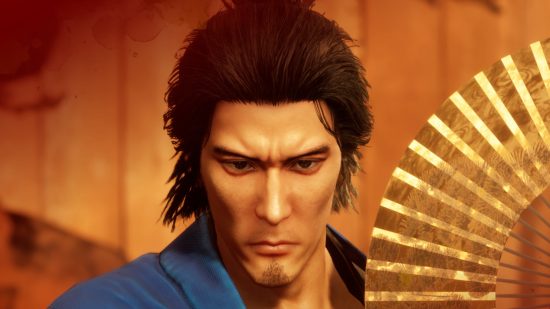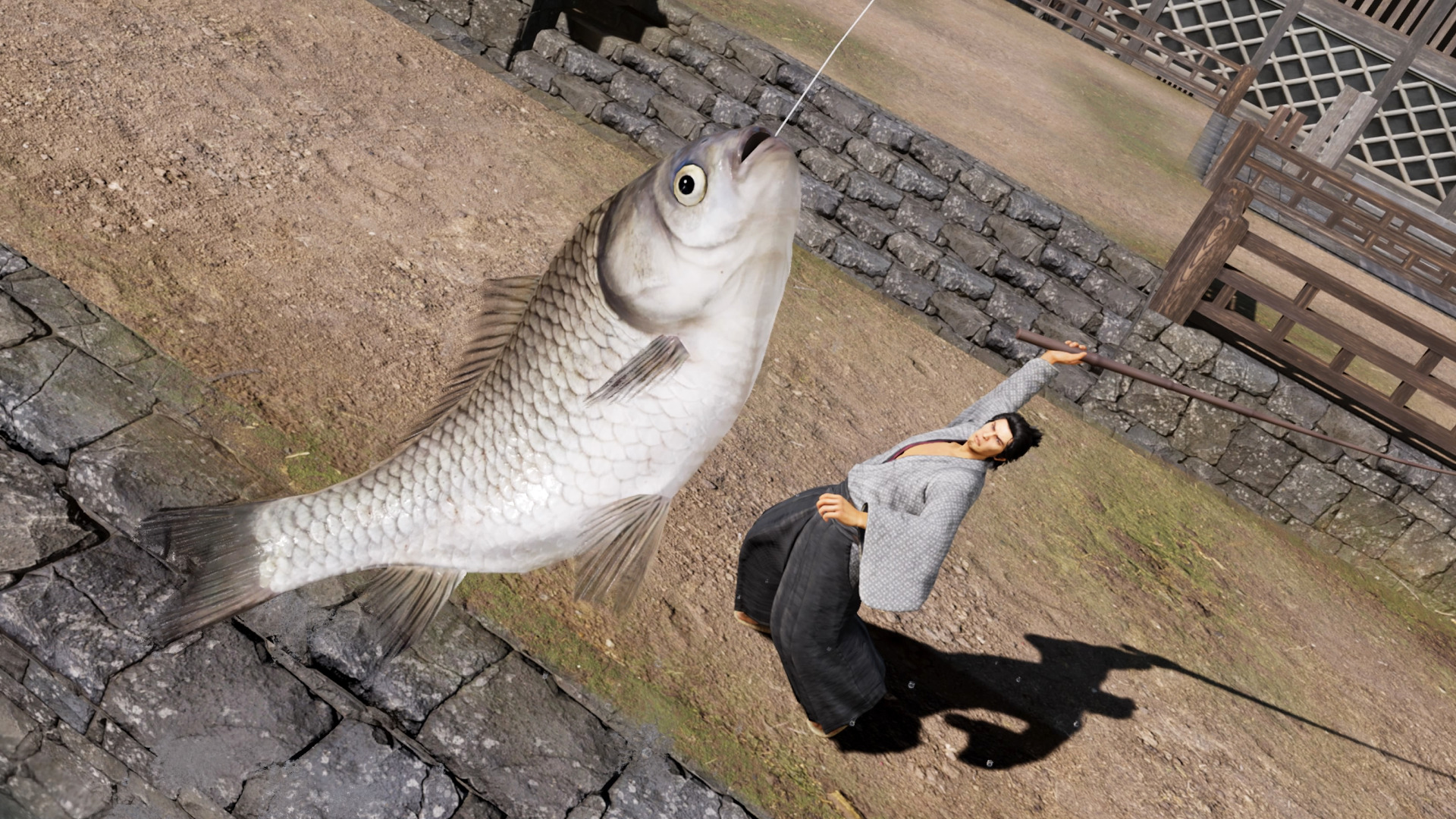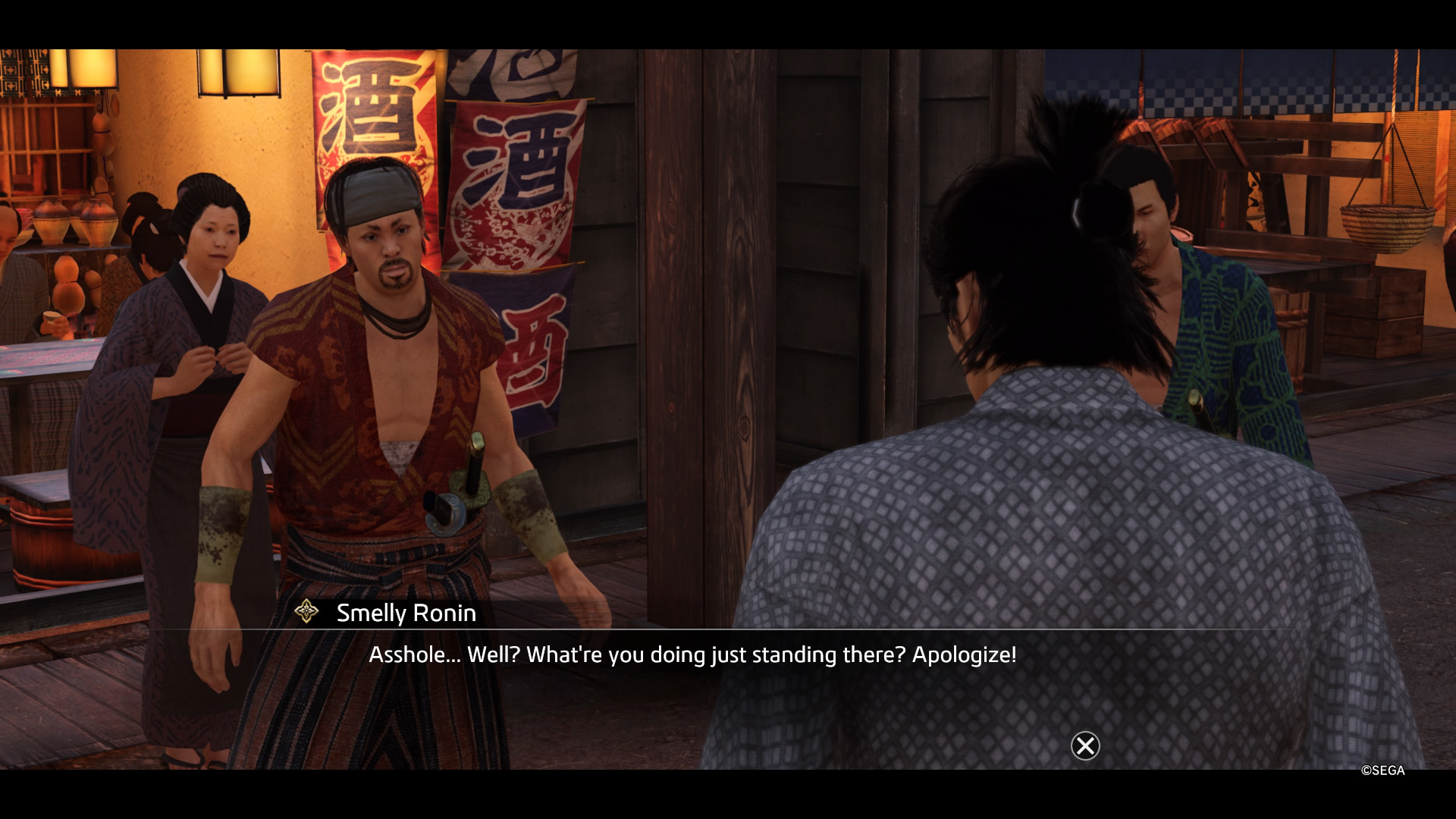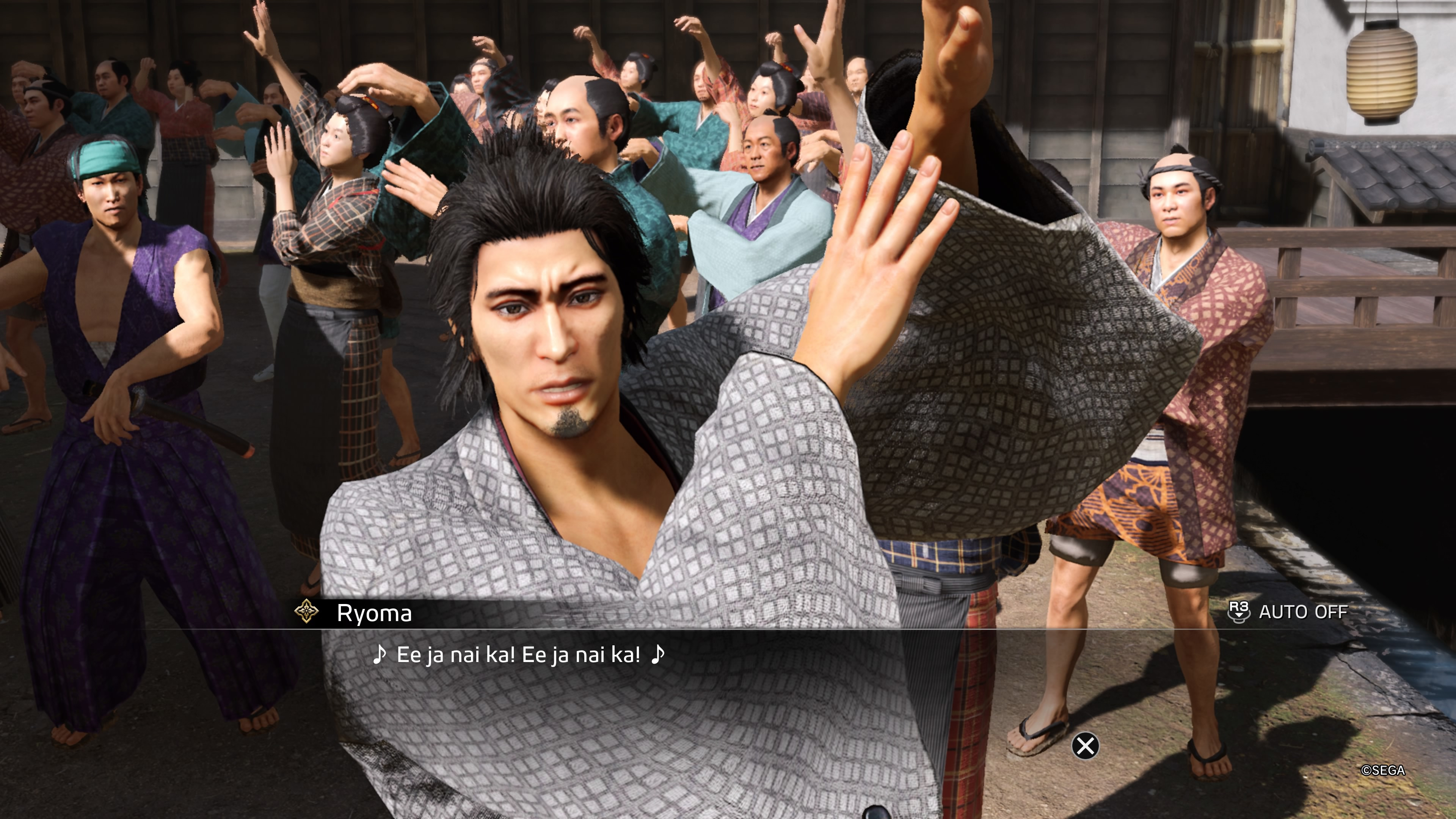Our Verdict
Like a Dragon: Ishin is a beautifully crafted re-release whose technical hiccups are overcome by its meaningful message and engaging combat.
In glorious high definition, RGG Studio has finally brought 2014’s Ryu Ga Gotoku Ishin! to western shores. Swapping out gritty neon-soaked cities for Sukiya-zukuri architecture, this samurai-heavy spin off shows that shiny modernity isn’t what makes the Yakuza games so special.
Like a Dragon: Ishin is a souped-up microcosm of the best things Yakuza has to offer. Beautifully written cut scenes blend carefully into brutal, challenging fights. Thoughtfully detailed environments teem with engaging minigames and charming, often hilarious substories. Wrapping up in around 20 to 30 hours, this small but mighty tale condenses many of Yakuza’s most effective features, making it a victory lap for die-hard fans and a perfect option for new players looking to take their first bite out of this endearing series.

Set in late 1800s Japan, players step into the shoes of Sakamoto Ryoma, a reluctant hero who is trying to find his place in this thrilling fictional retelling of the Bakumatsu period, a friction-filled era of the country’s history. Not long after you finish the tutorial, Ryoma is thrust into a chaotic world of espionage, assassinations, and coups as he attempts to hunt down the man who killed his adoptive father. To unravel the truth, Ryoma takes on a fake name and embroils himself in local political movements. Things quickly get complicated as more and more characters enter the fold across the game’s chapters, leading to compelling twists that belie harsh truths.
As you might have noticed, Ryomas’s likeness is none other than Kazuma Kiryu, the main protagonist of the Yakuza series. While Ishin is a spin-off, you’ll be pleased to hear that many fan-favourite characters show up, taking on new roles based on real historical figures. Knowing their faces from games like 2020’s Yakuza: Like a Dragon, it was hard for me not to associate them as friends or foes instantly. But, while they often appeared with the same mannerisms I had come to know them for, Ishin’s complex spider web of a story gave them a healthy independence that grounded them firmly in this fascinating setting.
Sadly, I’ve never been to Japan, but I almost feel like I have in some sense, given how much time I’ve spent wandering through the buzzing boroughs of Yokohama in Like a Dragon and stocking up at konbinis in the bustle of Kamurocho in Judgment. Ryu Ga Gotoku Studio layers so much detail into its game worlds, marking them with the digital fingerprints of real-world Japan. Regardless of the distant past of Ishin, RGG doubles down on this sentiment with Kyo’s Udon shops, Weaponsmiths, and Izekayas. The trademark tone never falters, though – I soon found an old-school Don Quijote for all of Ryoma’s budget buys.
And, when you’re done spending time in the busy city, you can tackle Another Life, a superb farming sim side game which plays more like Harvest Moon or Stardew Valley. Following some bloody battles, I loved escaping to Another Life to potter about in my garden, pet my dogs, and make meals via rhythmic cooking minigames. These quiet moments of respite offer equilibrium when paired with Ishin’s brilliant, gutsy story.
When I did return to the main story, though, I found pacing myself between objectives was more rewarding. The game is at its best when you explore it slowly, and that’s because you really get a sense of the world when you do so. Making use of the pace-killing walk button, I often found myself wandering idly, taking in the textures of the city and watching its vendors call out for customers.
Unfortunately, these serene moments were interrupted by some frustrating glitches on occasion. Mostly, this constituted random NPCs flying under the floor, which was odd but entertaining. Eventually, though, the glitches graduated to heart-sinking freezing when I’d go to save or switch between sub-menus. The issue reared its head most frequently when finishing a significant battle – something I hope RGG can fix early doors. There’s nothing worse than going. to upgrade your abilities and gear with the spoils of war, only to find a game-breaking freeze that’ll force you to take on the boss again.
After the turn-based antics of Like A Dragon, this remake of Ishin returns the series to its brawler origins, offering up four distinct weapon-based fighting styles players can switch between on a whim. With the simple press of a button, I could swap traditional swords for firearms or bare-knuckle attacks, using everything I had in my locker to fight my way out of sticky situations. The Wild Dancer style, a high-speed blend of acrobatic swordplay and ammunition offloading, was the most dynamic option for my playstyle. While it’s not necessary to lock into one approach for the whole game, as the leveling up becomes less frequent, broadening the scope of your favourite style in the daunting wheel of upgrades becomes a calculated choice worth thinking about.
Random combat interruptions whilst walking around the ornately detailed streets of Kyo made me feel more like ‘Mad Dog’ Majima than ever before. Invigorating percussive battle beats would ring out each time I came face-to-face with an aggressor. Within the space of a few hours, a decent-sized chip had formed on my shoulder, and my thirst for challengers grew. The four distinct combat styles in Ryoma’s heavy arsenal were my brush, and I was ready to paint the town blood red. And paint it, I did.
It’s a lot of fun once you find your rhythm, especially as you unlock the upgradable trooper card system that augments your attacks with buffs and elemental effects – though some did cause some concerning slowdown on the PS5. But it’s in the combat where the game shows spots of its age, too.
Ishin has a frustrating habit of pushing you into smaller and smaller rooms to face bigger foes – but the camera isn’t perfect, which can lead to some annoying deaths as well as some cheesy wins. Slowly being coaxed into a tiny boss stage made the otherwise heart-pounding musou dungeon crawling distinctly less thrilling. The upgraded combat interface feels at odds with the dated mission design at times. I took a lot of damage before accepting a formulaic stab-and-run technique. Thankfully this issue only arose a few times and often was a good reminder that the previously mentioned chip on my shoulder could do with being a bit smaller!
Like previous entries in the series, Ishin balances its heavy themes with plenty of rogue humour, a tightrope walk which is pulled off with precision. Whilst the turmoil of a changing Japan rages in the background, Ryoma will meet many side characters consumed by petty (and sometimes profound) struggles. Hapless couriers, failing fishermen and grieving families line the varied and moreish substories that supplement the campaign.
One minute you’ll be delivering vegetables to an insatiable child; the next, you’re looking for a proper burial spot. Yet, everyone feels so three-dimensional, and the localisation is so funny that you may struggle to stop yourself from jumping between these tasks in light of the overarching story.
This clever, consistent world-building let me settle into Kyo, and I was keen to learn more about the world around me as I made new friends. When interacting with certain characters, our friendship metre would rise, and slowly, I was offered morsels of their life, often leading to some form of helpful intervention from Ryoma. While fighting on the streets with speed and skill can feel amazing, it was the stories I listened to that really stuck with me.
By the time credits rolled on Like a Dragon: Ishin, I had truly been through the emotional ringer. The journey it takes you on and the stories you hear, as well as the thoughtfully considered themes of social mobility and identity, really do leave an impression, and it’s this I enjoyed most exploring in the fully-realised world.
Like a Dragon: Ishin squeezes a lot into what feels like a bite-size chunk. Balancing my appetite for battle and the comforts of country living was exceptionally fulfilling and fun to do. And, where each chapter in the main story felt like I was moonlighting as a detective, didactic tales were cleverly distilled into sweet sub-stories for me to pull apart with ease. Ishin is a satisfying addition to the Yakuza family that I wish we had in 2014.
At the very least, it’s been worth the wait.



